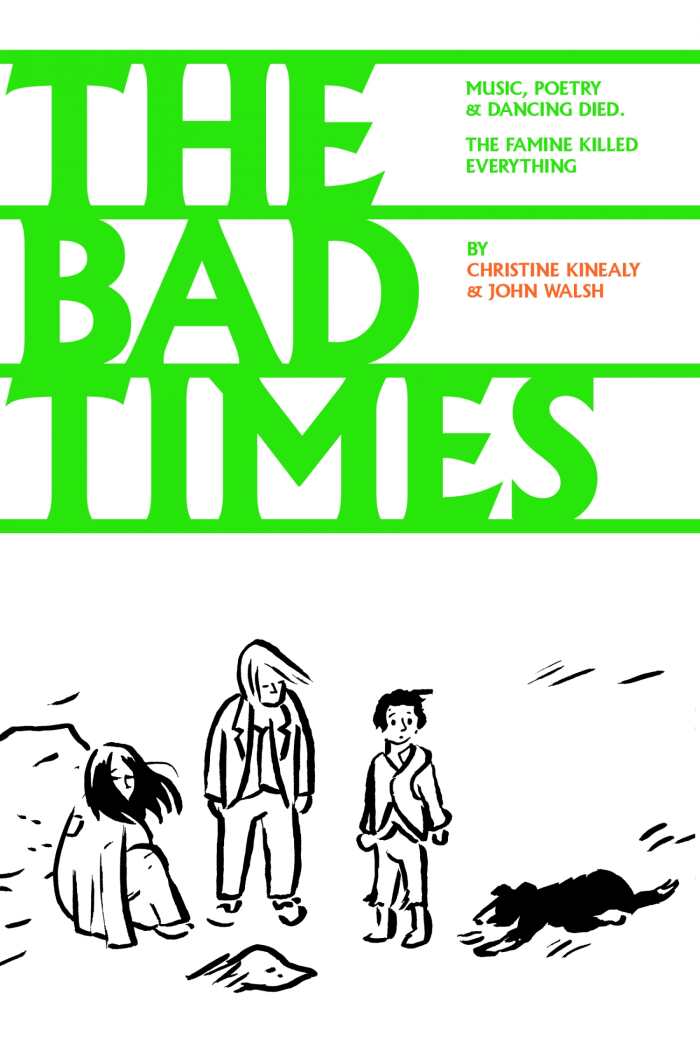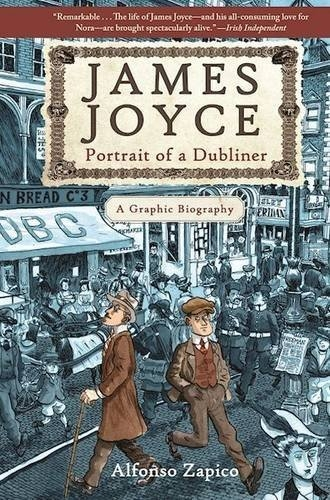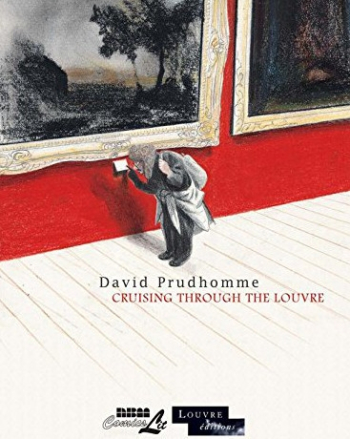It looks like you've stumbled upon a page meant to be read by our code instead of viewed directly. You're probably looking for this page.
Fresh Medium Goes Retro
Graphic Novels with a Historical Bent
Graphic novels get a bad rap: for being escapist, for being “easy reading,” for not going enough in depth. In defiance of those unfair stereotypes, these four graphic novels from our Summer Issue tackle subjects both historical and grand, reviving classic comics or engaging the biography in a brand new way. Have you heard that you can’t learn from this medium? Think again!
The Bad Times
An Drochshaol

Christine Kinealy
John Walsh, illustrator
XanEdu Publishing Inc
Softcover $15.19 (118pp)
978-0-9909454-1-3
Buy: Amazon
The Great Irish Famine, a tragedy that led to many Irish families emigrating to America in the late 1840s, has been studied in great detail by academics and historians. Christine Kinealy and John Walsh bring that story to life through vivid color and heartbreaking pathos in their graphic novel The Bad Times: An Drochshaol.
Kinealy’s credentials are unassailable: she serves as professor of history and Irish studies at Quinnipiac University, and is director of Ireland’s Great Hunger Institute at Quinnipiac. But in this book, Kinealy largely discards an academic’s approach in favor of a more accessible and relatable style, focusing on three young children and their efforts to survive and aid their friends and families during the famine.
The three characters, Liam, Dan, and Brigit, are bright and appealing. Walsh’s illustrations are basic, almost raw, but they deliver information and emotions without missing a beat; the story’s pace gains momentum steadily as it builds toward the final fates of the children.
In their efforts to make the book read like an in-the-moment narrative, Kinealy and Walsh do sacrifice opportunities to make understanding clearer—with the exception of the first and last pages, they omit captions, which could have been used to provide translations of Gaelic expressions right in the same panel. Instead, readers must refer to the glossary at the back of the book, an obstacle that might deter some. The Bad Times: An Drochshaol puts a human face on the suffering of the Irish Famine; it is an admirable effort and well worth reading.
PETER DABBENE (May 27, 2016)
James Joyce: Portrait of a Dubliner
A Graphic Biography

Alfonso Zapico
Arcade Publishing
Hardcover $22.99 (240pp)
978-1-62872-655-8
Buy: Local Bookstore (Bookshop), Amazon
James Joyce’s life, like much of his work, can be something of a mystery, a puzzle to untangle. Alfonso Zapico gives a thorough and masterful pictorial retelling of Joyce’s life in James Joyce: Portrait of a Dubliner: A Graphic Biography, a graphic novel that goes far toward illuminating the enigmatic author.
With his excellent illustrations, Zapico not only makes the many characters in Joyce’s life story distinct, but also provides rich background details of the cities that were so important to Joyce’s development: Dublin, Trieste, Paris. The book illuminates Joyce’s character and the formative events of his life, from his early parasitic stage, constantly borrowing from friends and family and imposing on their generosity, to his development as an established writer and family man. Joyce often turned on those who supported him, sometimes reconciling, sometimes not. Zapico reveals Joyce’s character fairly; a hagiography this is not.
Zapico’s text is well-written and substantial, complementing the book’s images perfectly. One notable shortcoming is that the small font size used for captions, though quite readable otherwise, makes commas and periods nearly indistinguishable except in context.
The only thing conspicuously lacking from Zapico’s graphic novel is Joyce’s text itself, and without examples, it might be difficult for some to understand his unique genius, and why Joyce was supported by mysterious benefactors and more established writers in the literary world. For those already familiar with Joyce’s writings, however, or those interested in the origins of those works, James Joyce: Portrait of a Dubliner is a brilliant companion.
PETER DABBENE (May 27, 2016)
Mandrake the Magician
The Hidden Kingdom of Murderers

Phil Davis
Lee Falk, illustrator
Titan Comics
Hardcover $39.99 (160pp)
978-0-85768-572-8
Buy: Amazon
Titan Comics returns readers to the glory of classic Sunday comic strips with Mandrake the Magician: The Hidden Kingdom of Murderers, a beautiful hardcover reprinting full-color Sunday strips from 1935 to 1937.
The progenitor of many other super-magician characters who followed, Mandrake’s powers aren’t well-defined, with some effects explained as “hypnosis,” while others clearly violate the laws of physics and veer into the supernatural. But far from being a detriment, this only enhances the surreal, dreamlike quality of Falk’s work, as Mandrake encounters a kingdom of cutthroat murderers from around the world, a dimension where metal men and crystal men dominate their fleshly counterparts, a circus plagued by a series of misfortunes, and a strange land whose citizens live subject to the whims of its half-insane ruler.
Through it all, Mandrake is accompanied by Lothar, his muscular servant, as they meet and aid a series of wronged, put-upon men with beautiful daughters or sweethearts (often royalty of some kind). Though Lothar’s speech pattern and the role of women are bound to the mores of the 1930s, there is a nobility in Mandrake and a genuine friendship with Lothar that makes their stories immensely enjoyable, even to modern eyes. Lothar also frequently provides timely comic relief.
The strips are reprinted nicely, in a size large enough to appreciate Davis’s detailed artwork. With today’s Sunday comics often shrunk and shortened to save money, Mandrake the Magician: The Hidden Kingdom of Murderers is a welcome opportunity to enjoy a classic series in an ideal format.
PETER DABBENE (May 27, 2016)
Cruising through the Louvre

David Prudhomme
NBM Publishing
Hardcover $22.99 (80pp)
978-1-56163-990-8
Buy: Amazon
NBM Publishing continues its popular and critically acclaimed “Louvre Collection” series of graphic novels with Cruising through the Louvre, an inventive offering by David Prudhomme. Other entries in the Louvre series have focused on particular art pieces, or the stories behind them; Prudhomme focuses instead on the people looking at the artwork. With an illustrated version of himself as guide, Prudhomme wryly observes that with rectangular frames everywhere in the museum, “It’s like I’m walking inside a giant comic book.”
Prudhomme illustrates the book in colored pencil, and the art is detailed and recognizable, the faces of the museum patrons amusing or affecting, as intended. While some of Prudhomme’s panels seem straightforward, with tourists taking snapshots or staring at a particular piece of art, others play with visual puns and echoes of real people next to statues or paintings that resemble them.
The highlight of the book comes when Prudhomme shows the crowd around the Mona Lisa—as viewed by the Mona Lisa. “And do people ever think about what she sees?” he asks.
The last two pages of the book offer factoids about the Louvre’s artwork: largest, smallest, oldest, along with demographic information about the visitors, and even a list of unclaimed items found in the museum. But first and foremost, Prudhomme’s book is exactly what its title indicates: a leisurely, illustrated stroll through the Louvre by someone who’s seen the art before and realizes that there’s much more to be found.
PETER DABBENE (May 27, 2016)
Peter Dabbene
